CHEMICAL IDENTIFICATION
-
RTECS NUMBER :
-
KI8575000
-
CHEMICAL NAME :
-
Ethane, 1,1,2,2-tetrachloro-
-
CAS REGISTRY NUMBER :
-
79-34-5
-
BEILSTEIN REFERENCE NO. :
-
0969206
-
LAST UPDATED :
-
199712
-
DATA ITEMS CITED :
-
70
-
MOLECULAR FORMULA :
-
C2-H2-Cl4
-
MOLECULAR WEIGHT :
-
167.84
-
WISWESSER LINE NOTATION :
-
GYGYGG
HEALTH HAZARD DATA
ACUTE TOXICITY DATA
-
TYPE OF TEST :
-
TDLo - Lowest published toxic dose
-
ROUTE OF EXPOSURE :
-
Oral
-
SPECIES OBSERVED :
-
Human
-
DOSE/DURATION :
-
30 mg/kg
-
TOXIC EFFECTS :
-
Behavioral - general anesthetic
-
TYPE OF TEST :
-
TCLo - Lowest published toxic concentration
-
ROUTE OF EXPOSURE :
-
Inhalation
-
SPECIES OBSERVED :
-
Human
-
DOSE/DURATION :
-
1000 mg/m3/30M
-
TOXIC EFFECTS :
-
Behavioral - somnolence (general depressed activity) Behavioral - hallucinations, distorted perceptions
-
TYPE OF TEST :
-
LD50 - Lethal dose, 50 percent kill
-
ROUTE OF EXPOSURE :
-
Oral
-
SPECIES OBSERVED :
-
Rodent - rat
-
DOSE/DURATION :
-
250 mg/kg
-
TOXIC EFFECTS :
-
Details of toxic effects not reported other than lethal dose value
-
TYPE OF TEST :
-
LCLo - Lowest published lethal concentration
-
ROUTE OF EXPOSURE :
-
Inhalation
-
SPECIES OBSERVED :
-
Rodent - rat
-
DOSE/DURATION :
-
1000 ppm/4H
-
TOXIC EFFECTS :
-
Details of toxic effects not reported other than lethal dose value
-
TYPE OF TEST :
-
LC50 - Lethal concentration, 50 percent kill
-
ROUTE OF EXPOSURE :
-
Inhalation
-
SPECIES OBSERVED :
-
Rodent - mouse
-
DOSE/DURATION :
-
4500 mg/m3/2H
-
TOXIC EFFECTS :
-
Details of toxic effects not reported other than lethal dose value
-
TYPE OF TEST :
-
LD50 - Lethal dose, 50 percent kill
-
ROUTE OF EXPOSURE :
-
Intraperitoneal
-
SPECIES OBSERVED :
-
Rodent - mouse
-
DOSE/DURATION :
-
821 mg/kg
-
TOXIC EFFECTS :
-
Details of toxic effects not reported other than lethal dose value
-
TYPE OF TEST :
-
LD50 - Lethal dose, 50 percent kill
-
ROUTE OF EXPOSURE :
-
Subcutaneous
-
SPECIES OBSERVED :
-
Rodent - mouse
-
DOSE/DURATION :
-
1108 mg/kg
-
TOXIC EFFECTS :
-
Behavioral - sleep Behavioral - ataxia
-
TYPE OF TEST :
-
LDLo - Lowest published lethal dose
-
ROUTE OF EXPOSURE :
-
Oral
-
SPECIES OBSERVED :
-
Mammal - dog
-
DOSE/DURATION :
-
300 mg/kg
-
TOXIC EFFECTS :
-
Liver - hepatitis (hepatocellular necrosis), zonal Behavioral - sleep Liver - fatty liver degeneration
-
TYPE OF TEST :
-
LDLo - Lowest published lethal dose
-
ROUTE OF EXPOSURE :
-
Intravenous
-
SPECIES OBSERVED :
-
Mammal - dog
-
DOSE/DURATION :
-
50 mg/kg
-
TOXIC EFFECTS :
-
Details of toxic effects not reported other than lethal dose value
-
TYPE OF TEST :
-
LCLo - Lowest published lethal concentration
-
ROUTE OF EXPOSURE :
-
Inhalation
-
SPECIES OBSERVED :
-
Mammal - cat
-
DOSE/DURATION :
-
19 gm/m3/45M
-
TOXIC EFFECTS :
-
Sense Organs and Special Senses (Eye) - lacrimation Behavioral - general anesthetic Gastrointestinal - changes in structure or function of salivary glands
-
TYPE OF TEST :
-
LDLo - Lowest published lethal dose
-
ROUTE OF EXPOSURE :
-
Subcutaneous
-
SPECIES OBSERVED :
-
Rodent - rabbit
-
DOSE/DURATION :
-
500 mg/kg
-
TOXIC EFFECTS :
-
Details of toxic effects not reported other than lethal dose value
-
TYPE OF TEST :
-
LDLo - Lowest published lethal dose
-
ROUTE OF EXPOSURE :
-
Intraperitoneal
-
SPECIES OBSERVED :
-
Rodent - guinea pig
-
DOSE/DURATION :
-
500 mg/kg
-
TOXIC EFFECTS :
-
Liver - fatty liver degeneration
-
TYPE OF TEST :
-
TDLo - Lowest published toxic dose
-
ROUTE OF EXPOSURE :
-
Oral
-
SPECIES OBSERVED :
-
Rodent - rat
-
DOSE/DURATION :
-
9480 mg/kg/6W-I
-
TOXIC EFFECTS :
-
Related to Chronic Data - death
-
TYPE OF TEST :
-
TCLo - Lowest published toxic concentration
-
ROUTE OF EXPOSURE :
-
Inhalation
-
SPECIES OBSERVED :
-
Rodent - rat
-
DOSE/DURATION :
-
50 mg/m3/4H/6W-I
-
TOXIC EFFECTS :
-
Brain and Coverings - recordings from specific areas of CNS Liver - changes in liver weight Blood - changes in serum composition (e.g. TP, bilirubin, cholesterol)
-
TYPE OF TEST :
-
TDLo - Lowest published toxic dose
-
ROUTE OF EXPOSURE :
-
Intraperitoneal
-
SPECIES OBSERVED :
-
Rodent - mouse
-
DOSE/DURATION :
-
16 gm/kg/40D-I
-
TOXIC EFFECTS :
-
Behavioral - sleep Liver - fatty liver degeneration Related to Chronic Data - death
-
TYPE OF TEST :
-
TDLo - Lowest published toxic dose
-
ROUTE OF EXPOSURE :
-
Oral
-
SPECIES OBSERVED :
-
Rodent - rat
-
DOSE/DURATION :
-
42 gm/kg/78W-I
-
TOXIC EFFECTS :
-
Tumorigenic - equivocal tumorigenic agent by RTECS criteria Liver - tumors
-
TYPE OF TEST :
-
TDLo - Lowest published toxic dose
-
ROUTE OF EXPOSURE :
-
Oral
-
SPECIES OBSERVED :
-
Rodent - mouse
-
DOSE/DURATION :
-
55 gm/kg/78W-I
-
TOXIC EFFECTS :
-
Tumorigenic - Carcinogenic by RTECS criteria Liver - tumors
-
TYPE OF TEST :
-
TD - Toxic dose (other than lowest)
-
ROUTE OF EXPOSURE :
-
Oral
-
SPECIES OBSERVED :
-
Rodent - mouse
-
DOSE/DURATION :
-
110 gm/kg/78W-I
-
TOXIC EFFECTS :
-
Tumorigenic - Carcinogenic by RTECS criteria Liver - tumors
-
TYPE OF TEST :
-
Mutation test systems - not otherwise specified
MUTATION DATA
-
TYPE OF TEST :
-
Sister chromatid exchange
-
TEST SYSTEM :
-
Rodent - hamster Ovary
-
REFERENCE :
-
EMMUEG Environmental and Molecular Mutagenesis. (Alan R. Liss, Inc., 41 E. 11th St., New York, NY 10003) V.10- 1987- Volume(issue)/page/year: 10(Suppl 10),1,1987 *** REVIEWS *** ACGIH TLV-Not classifiable as a human carcinogen DTLVS* The Threshold Limit Values (TLVs) and Biological Exposure Indices (BEIs) booklet issues by American Conference of Governmental Industrial Hygienists (ACGIH), Cincinnati, OH, 1996 Volume(issue)/page/year: TLV/BEI,1997 ACGIH TLV-TWA 6.9 mg/m3 (1 ppm) (skin) DTLVS* The Threshold Limit Values (TLVs) and Biological Exposure Indices (BEIs) booklet issues by American Conference of Governmental Industrial Hygienists (ACGIH), Cincinnati, OH, 1996 Volume(issue)/page/year: TLV/BEI,1997 IARC Cancer Review:Animal Limited Evidence IMEMDT IARC Monographs on the Evaluation of Carcinogenic Risk of Chemicals to Man. (WHO Publications Centre USA, 49 Sheridan Ave., Albany, NY 12210) V.1- 1972- Volume(issue)/page/year: 20,477,1979 IARC Cancer Review:Human Inadequate Evidence IMSUDL IARC Monographs, Supplement. (WHO Publications Centre USA, 49 Sheridan Ave., Albany, NY 12210) No.1- 1979- Volume(issue)/page/year: 7,354,1987 IARC Cancer Review:Group 3 IMSUDL IARC Monographs, Supplement. (WHO Publications Centre USA, 49 Sheridan Ave., Albany, NY 12210) No.1- 1979- Volume(issue)/page/year: 7,354,1987 TOXICOLOGY REVIEW AIHAAP American Industrial Hygiene Association Journal. (AIHA, 475 Wolf Ledges Pkwy., Akron, OH 44311) V.19- 1958- Volume(issue)/page/year: 40(3),A46,1979 *** U.S. STANDARDS AND REGULATIONS *** MSHA STANDARD-air:TWA 5 ppm (35 mg/m3) (skin) DTLVS* The Threshold Limit Values (TLVs) and Biological Exposure Indices (BEIs) booklet issues by American Conference of Governmental Industrial Hygienists (ACGIH), Cincinnati, OH, 1996 Volume(issue)/page/year: 3,249,1971 OSHA PEL (Gen Indu):8H TWA 5 ppm (35 mg/m3) (skin) CFRGBR Code of Federal Regulations. (U.S. Government Printing Office, Supt. of Documents, Washington, DC 20402) Volume(issue)/page/year: 29,1910.1000,1994 OSHA PEL (Construc):8H TWA 5 ppm (35 mg/m3) (skin) CFRGBR Code of Federal Regulations. (U.S. Government Printing Office, Supt. of Documents, Washington, DC 20402) Volume(issue)/page/year: 29,1926.55,1994 OSHA PEL (Shipyard):8H TWA 5 ppm (35 mg/m3) (skin) CFRGBR Code of Federal Regulations. (U.S. Government Printing Office, Supt. of Documents, Washington, DC 20402) Volume(issue)/page/year: 29,1915.1000,1993 OSHA PEL (Fed Cont):8H TWA 5 ppm (35 mg/m3) (skin) CFRGBR Code of Federal Regulations. (U.S. Government Printing Office, Supt. of Documents, Washington, DC 20402) Volume(issue)/page/year: 41,50-204.50,1994 *** OCCUPATIONAL EXPOSURE LIMITS *** OEL-AUSTRALIA:TWA 1 ppm (7 mg/m3);Skin JAN 1993 OEL-AUSTRIA:TWA 1 ppm (7 mg/m3);Skin JAN 1993 OEL-BELGIUM:TWA 1 ppm (6.9 mg/m3);Skin JAN 1993 OEL-DENMARK:TWA 1 ppm (7 mg/m3);Skin JAN 1993 OEL-FINLAND:TWA 1 ppm (7 mg/m3);STEL 3 ppm (21 mg/m3);Skin JAN 1993 OEL-FRANCE:TWA 1 ppm (7 mg/m3);STEL 5 ppm (35 mg/m3) JAN 1993 OEL-GERMANY:TWA 1 ppm (7 mg/m3);Skin;Carcinogen JAN 1993 OEL-JAPAN:TWA 1 ppm (6.9 mg/m3);Skin JAN 1993 OEL-THE NETHERLANDS:TWA 1 ppm (7 mg/m3);Skin JAN 1993 OEL-THE PHILIPPINES:TWA 5 ppm (35 mg/m3);Skin JAN 1993 OEL-POLAND:TWA 5 mg/m3 JAN 1993 OEL-RUSSIA:TWA 1 ppm JAN 1993 OEL-SWITZERLAND:TWA 1 ppm (7 mg/m3);Skin JAN 1993 OEL-TURKEY:TWA 5 ppm (35 mg/m3) JAN 1993 OEL IN BULGARIA, COLOMBIA, JORDAN, KOREA check ACGIH TLV OEL IN NEW ZEALAND, SINGAPORE, VIETNAM check ACGIH TLV *** NIOSH STANDARDS DEVELOPMENT AND SURVEILLANCE DATA *** NIOSH RECOMMENDED EXPOSURE LEVEL (REL) : NIOSH REL TO 1,1,2,2-TETRACHLOROETHANE-air:10H CA TWA 1 ppm REFERENCE : NIOSH* National Institute for Occupational Safety and Health, U.S. Dept. of Health, Education, and Welfare, Reports and Memoranda. Volume(issue)/page/year: DHHS #92-100,1992 NIOSH OCCUPATIONAL EXPOSURE SURVEY DATA : NOHS - National Occupational Hazard Survey (1974) NOHS Hazard Code - 71460 No. of Facilities: 244 (estimated) No. of Industries: 8 No. of Occupations: 15 No. of Employees: 7044 (estimated) NOES - National Occupational Exposure Survey (1983) NOES Hazard Code - 71460 No. of Facilities: 501 (estimated) No. of Industries: 2 No. of Occupations: 10 No. of Employees: 4145 (estimated) No. of Female Employees: 926 (estimated)
|
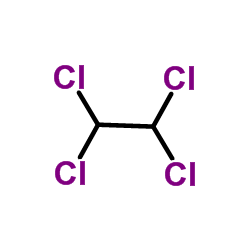






 CAS#:156-60-5
CAS#:156-60-5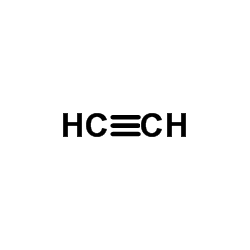 CAS#:74-86-2
CAS#:74-86-2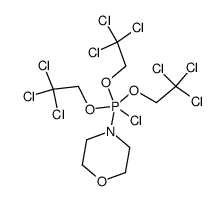 CAS#:76078-34-7
CAS#:76078-34-7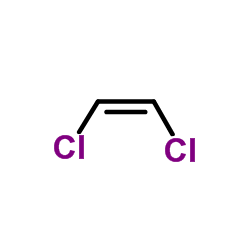 CAS#:156-59-2
CAS#:156-59-2 CAS#:76-01-7
CAS#:76-01-7 CAS#:3474-12-2
CAS#:3474-12-2 CAS#:107-06-2
CAS#:107-06-2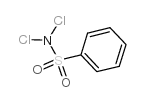 CAS#:473-29-0
CAS#:473-29-0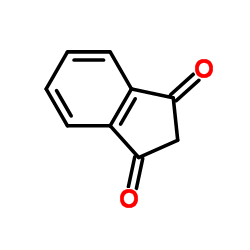 CAS#:606-23-5
CAS#:606-23-5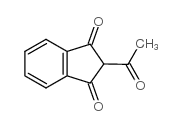 CAS#:1133-72-8
CAS#:1133-72-8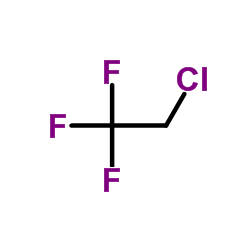 CAS#:75-88-7
CAS#:75-88-7 CAS#:471-43-2
CAS#:471-43-2 CAS#:306-83-2
CAS#:306-83-2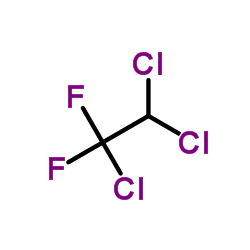 CAS#:354-21-2
CAS#:354-21-2 CAS#:431-06-1
CAS#:431-06-1 CAS#:359-28-4
CAS#:359-28-4 CAS#:354-58-5
CAS#:354-58-5 CAS#:811-95-0
CAS#:811-95-0
